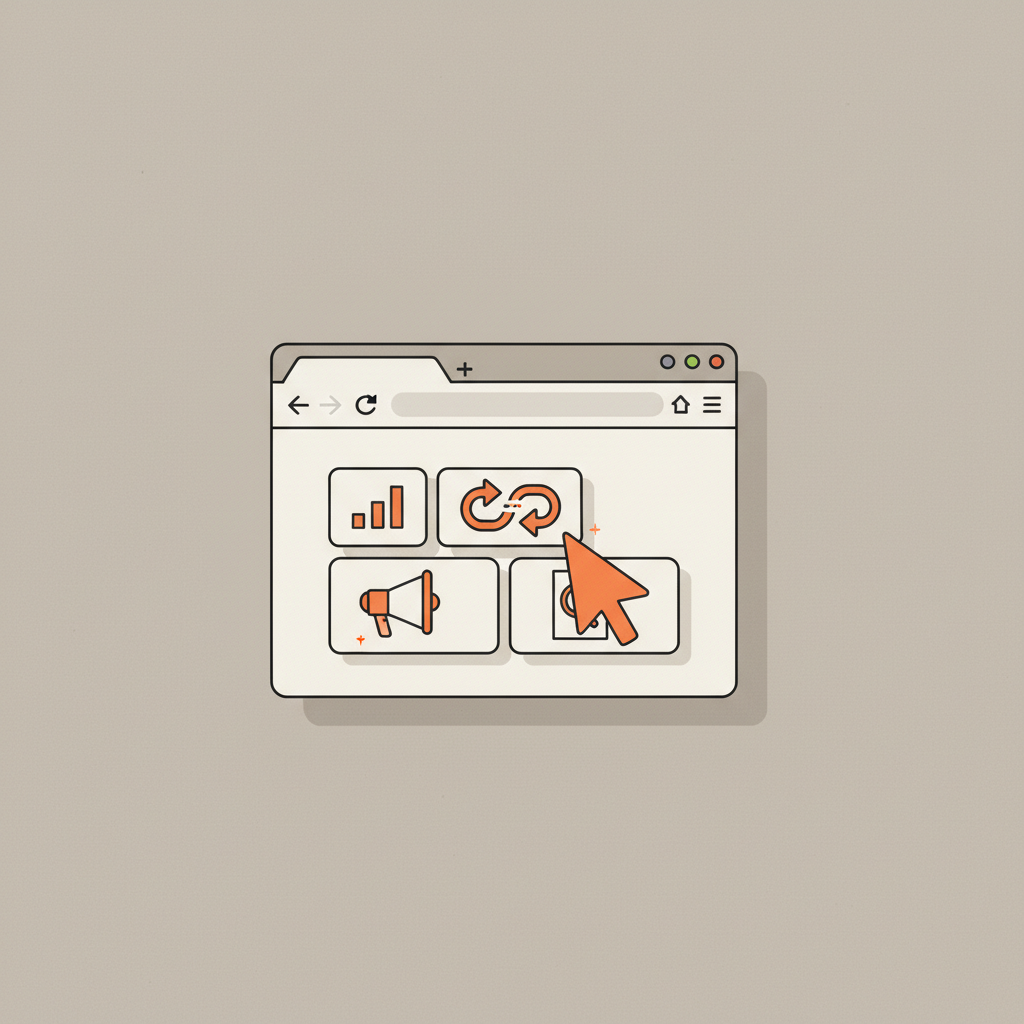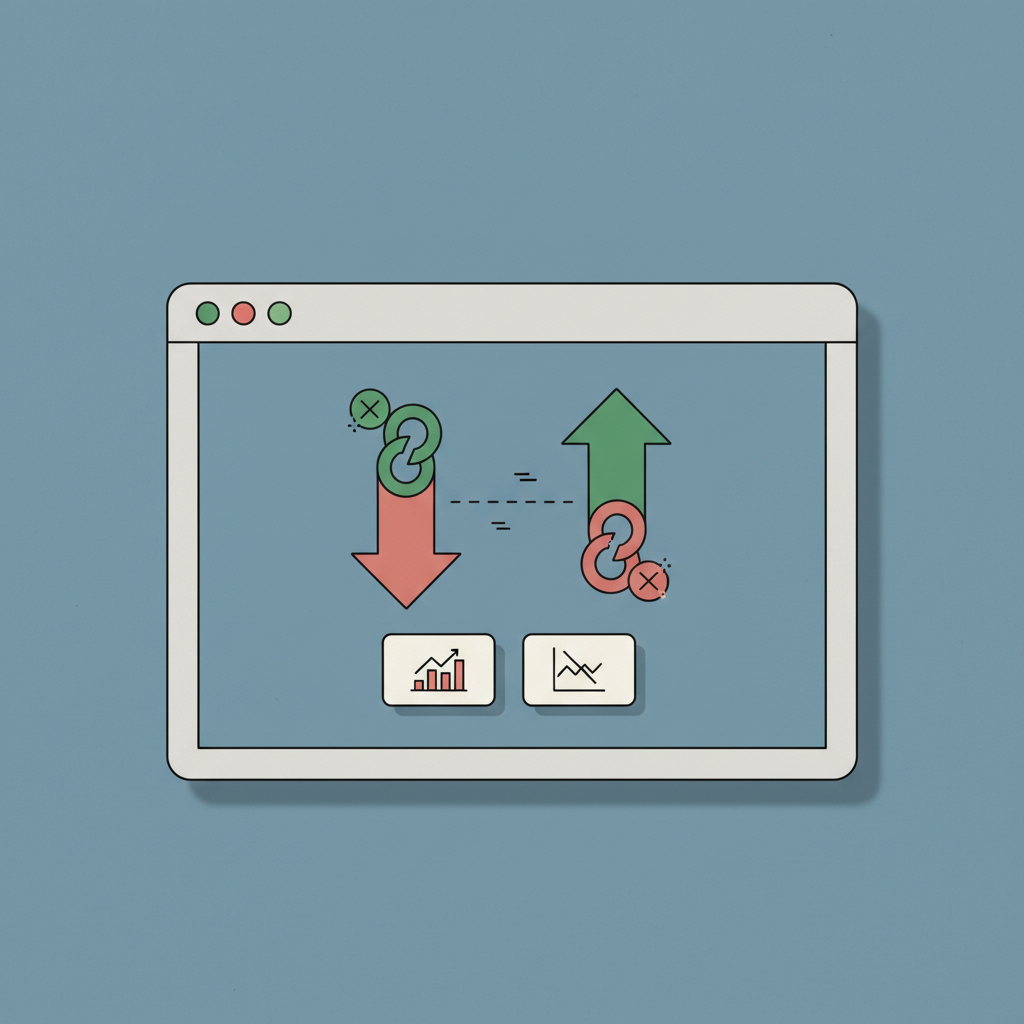In the vast and often confusing world of search engine optimization (SEO), metrics are king. They are the compasses we use to navigate the complex algorithms of search engines, measure our progress, and spy on the competition. But with a sea of acronyms like DA, PA, UR, TF, and CF, it’s easy to get lost. Among these, one metric has risen to prominence as a go-to indicator of a website’s authority: Ahrefs Domain Rating, or DR.
For digital marketers, SEO specialists, and business owners, understanding DR is not just academic—it’s essential. It influences everything from your link-building strategy and competitor analysis to how you gauge the potential difficulty of ranking for a target keyword. A high DR is often seen as a badge of honor, a sign that a website has a powerful and authoritative presence online. But what does this number truly represent? Is a higher DR always better? And how does Ahrefs even arrive at this single, powerful figure?
Many professionals track their DR score with an almost obsessive focus, celebrating every point gained and scrutinizing every point lost. Yet, a surprising number of them operate with only a surface-level understanding of its mechanics. They know it relates to backlinks, but the nuances of its calculation—the logarithmic scale, the role of linking domains, and the concept of “link equity”—remain a mystery. This knowledge gap can lead to flawed strategies, wasted resources, and misguided SEO priorities.
This comprehensive guide will pull back the curtain on Ahrefs Domain Rating. We will dissect what it is, explore the intricate details of its calculation, and differentiate it from other popular authority metrics. More importantly, we will provide actionable insights on how to use DR effectively in your SEO strategy and outline a clear path to improving your score. By the end, you’ll not only understand what your DR is but, more critically, what it means for your business.
What Exactly is Ahrefs Domain Rating (DR)?
Ahrefs Domain Rating (DR) is a proprietary metric developed by the SEO tool suite Ahrefs to measure the strength and authority of a website’s total backlink profile. It is presented on a 100-point logarithmic scale, where a higher score indicates a stronger and more authoritative backlink profile.
At its core, DR is designed to give you a quick and reliable estimate of a website’s “link popularity.” Think of it like a reputation score in the online world. When a website links to you, it’s essentially casting a vote of confidence. DR aggregates all these votes to determine your overall standing. However, not all votes are created equal. A vote from a highly respected, authoritative site like a major news publication or a leading industry blog carries significantly more weight than a vote from a small, unknown personal blog.
It’s crucial to understand the term “logarithmic scale.” This means that the gap between scores increases exponentially as you move up the scale. For example, moving from a DR of 10 to 20 is relatively easy. Moving from DR 60 to 70 is substantially more difficult, and climbing from DR 80 to 90 requires an immense amount of high-quality link acquisition. This reflects the reality of building website authority—the more established you become, the harder it is to make significant leaps.
One of the most important things to remember is what DR does not measure. It is not influenced by:
- Website Traffic: A site can have a high DR and low traffic, or vice versa.
- Keyword Rankings: While correlated, DR does not directly measure or affect your rankings for specific keywords.
- Domain Age: An older domain doesn’t automatically get a higher DR.
- On-Page SEO: Factors like site speed, content quality, and keyword optimization have no direct impact on the DR score.
- Spam Score: DR purely measures link strength, not the potential toxicity of a backlink profile.
DR is a measure of quantity and, most importantly, quality of backlinks pointing to an entire domain. This includes all its subdomains and pages. It provides a holistic view of a site’s authority based solely on its link graph, making it a powerful tool for off-page SEO analysis.
How is Domain Rating Calculated? The Core Mechanics
The Ahrefs DR calculation is a complex algorithm, but it’s built on a few fundamental principles that are easy to grasp. Understanding these mechanics helps you interpret the score correctly and build a strategy to improve it. The calculation primarily revolves around how “link equity” flows from one website to another.
Here are the key factors that go into the DR calculation:
- The DR of Linking Domains: This is the most significant factor. A backlink from a website with a high DR passes much more authority (or “DR juice”) than a link from a website with a low DR. A single link from a DR 90 site can have a greater impact on your score than hundreds of links from DR 10 sites.
- The Number of Unique Linking Domains (Referring Domains): The calculation considers how many different websites link to you. Getting 10 links from 10 different websites is far more valuable for your DR than getting 10 links from the same website. The first link from a new, unique domain provides the biggest boost.
- The Number of Unique Domains Each Linking Site Links To: This is a critical and often overlooked aspect. Ahrefs’ formula accounts for how link equity is distributed. If a high-DR website links out to thousands of other websites, the value passed by each individual link is diluted. Conversely, if a high-DR site is very selective about who it links to, each of those outgoing links carries more weight. Your goal is to get links from sites that not only have a high DR but also don’t spray their links across the web indiscriminately.
- The “Follow” Attribute: The DR calculation is primarily based on “followed” backlinks. These are the standard links that search engines use to pass authority. While Ahrefs does index “nofollow” links, they do not pass DR value in the calculation, aligning with how Google has historically treated them for PageRank purposes.
To put it simply, the algorithm works something like this:
- Ahrefs finds all the domains in its database that have at least one followed link pointing to another website.
- It then looks at which domains each of those sites links to.
- Finally, it calculates a raw DR score for every website by determining how much “DR juice” flows to it, factoring in the DR of the linking sites and how that value is diluted among all their outgoing links. This process is repeated in iterations until the scores stabilize across the entire web graph.
This sophisticated approach ensures that DR is a robust measure of link authority that is difficult to manipulate with low-quality link schemes.
Domain Rating vs. Other Common SEO Metrics
DR is just one of many authority metrics available to SEOs. Understanding how it compares to others, particularly Moz’s Domain Authority (DA) and its Ahrefs counterpart, URL Rating (UR), is key to using it effectively.
| Metric | Company | Scope | Primary Calculation Factors | Primary Use Case |
|---|---|---|---|---|
| Domain Rating (DR) | Ahrefs | Entire Domain | Quality and quantity of backlinks to the entire domain. Considers the DR of linking sites and link equity dilution. | Assessing the overall backlink strength of a website for competitor analysis and link prospecting. |
| URL Rating (UR) | Ahrefs | Single URL/Page | Quality and quantity of backlinks (both internal and external) pointing to a specific page. | Evaluating the link equity and ranking potential of an individual page, like a blog post or landing page. |
| Domain Authority (DA) | Moz | Entire Domain | A machine learning model that predicts ranking potential based on dozens of factors, including linking root domains and total links. | A comparative metric to gauge a website’s potential to rank in search results relative to competitors. |
| Authority Score (AS) | Semrush | Entire Domain | A compound metric based on link power, organic traffic, and backlink profile data. Aims to measure overall domain quality and SEO performance. | Evaluating a domain’s overall trustworthiness and SEO strength for prospecting and competitive research. |
DR vs. URL Rating (UR)
This is the most important internal comparison within the Ahrefs toolset. While both are on a 100-point scale, they measure different things:
- DR is domain-level: It reflects the strength of the entire website’s backlink profile.
- UR is page-level: It reflects the strength of a single page’s backlink profile, including both external links from other sites and internal links from your own site.
A website’s homepage often has a high UR because it naturally attracts the most backlinks and internal links. A brand new blog post on that same site will have a very low UR (starting at 0) but will exist on a domain with a high DR. The goal is to build high-quality backlinks to that new post to increase its UR, which in turn contributes to and is supported by the site’s overall DR.
DR vs. Moz’s Domain Authority (DA)
This is the classic industry comparison. DR and DA are direct competitors aiming to measure the same concept: domain-level authority. However, they are not interchangeable.
- Different Databases: Ahrefs and Moz use their own web crawlers and link indexes. Ahrefs is widely regarded as having a larger and more frequently updated link index, which can lead to different scores.
- Different Algorithms: They use different formulas to calculate their scores. DR focuses more purely on the backlink profile, while DA incorporates more factors into its machine learning model.
Neither metric is “better” than the other; they are just different. The key is consistency. If you use DR for your analysis, compare it to the DR of other sites. If you use DA, compare it to DA. Mixing and matching them will lead to confusing and inaccurate conclusions.
What is a “Good” Domain Rating?
This is perhaps the most common question asked about DR, and the answer is always the same: it’s relative.
A “good” DR is one that is competitive within your specific niche or industry. There is no absolute number that signifies success. A local plumbing business might dominate its local search results with a DR of 35, while a national software company might struggle to be seen with a DR of 65.
The most effective way to determine a good DR for your site is to perform a competitive analysis. Identify your top 5-10 organic search competitors—the ones who consistently rank for the keywords you are targeting. Analyze their DR scores. This will give you a realistic benchmark for what it takes to compete in your space.
However, for general guidance, we can categorize DR scores into broad tiers:
| DR Score Range | General Interpretation | Characteristics |
|---|---|---|
| 0 – 20 | Very Low Authority | A new website or one with a very sparse or low-quality backlink profile. |
| 21 – 40 | Developing Authority | The site has started to acquire some decent links but is still in the early stages of building authority. |
| 41 – 60 | Established Authority | A well-established website with a solid backlink profile from a variety of reputable sources. Competitive in many niches. |
| 61 – 80 | High Authority | A recognized and authoritative site in its industry, with a powerful backlink profile that is difficult to replicate. |
| 81+ | Elite Authority | Global authorities and household names (e.g., major news outlets, tech giants, platforms like GitHub or Wikipedia). |
Your focus should not be on reaching DR 90, but on closing the gap between your DR and the DR of your direct competitors.
How to Use Domain Rating in Your SEO Strategy
DR is not just a vanity metric. When used correctly, it’s a powerful tool for informing and refining your SEO efforts.
- Competitor Analysis: This is the primary use case for DR. By comparing your DR to your competitors’, you can quickly gauge the strength of their off-page SEO. If a competitor consistently outranks you and has a DR that is 20 points higher, it’s a strong signal that you need to invest more heavily in strategic link building to close that authority gap.
- Link Building Prospecting: DR is invaluable for qualifying potential link targets. When you are looking for websites to get a backlink from (e.g., through guest posting or outreach), their DR is a strong indicator of the quality of that link. While relevance is always the most important factor, prioritizing outreach to sites with a DR equal to or higher than your own is a good general rule for building authority.
- Gauging Keyword Difficulty: When you analyze the search engine results page (SERP) for a target keyword, look at the DR of the top-ranking websites. If the entire first page is filled with sites that have a DR of 75+ and your site has a DR of 30, you know that it will be extremely difficult to rank for that term with content alone. This helps you prioritize more realistic keyword targets where the SERP is populated by sites with a DR closer to your own.
- Tracking Link Building Success: While it shouldn’t be the only metric you track, monitoring your DR over time provides a high-level view of the success of your link-building campaigns. A steady increase in DR indicates that you are successfully acquiring links that Ahrefs’ algorithm deems valuable.
Common Misconceptions and Pitfalls of Domain Rating
To use DR effectively, you must also be aware of its limitations and the common misunderstandings that can lead you astray.
- Misconception: DR is a Google Ranking Factor. This is the most critical point to understand. Google does not see or use Ahrefs’ DR score in its algorithm. DR is a third-party metric created to correlate with what Google values. A high DR often correlates with high rankings, but it does not cause them.
- Misconception: A High DR Guarantees High Traffic. It’s entirely possible for a website to have a high DR but receive very little organic traffic. This can happen if the site has acquired powerful but irrelevant backlinks, or if it targets keywords with no search volume. Conversely, a site with a lower DR can get massive traffic if it ranks for high-volume keywords.
- Pitfall: Chasing DR Above All Else. The single biggest mistake is prioritizing a high-DR link over a highly relevant link. A backlink from a DR 45 blog that is perfectly aligned with your niche and read by your target audience is infinitely more valuable than a link from an unrelated DR 80 website. Relevance drives qualified traffic and signals topical authority to Google.
- Pitfall: Obsessing Over Small Fluctuations. Your DR score can and will fluctuate. Ahrefs regularly updates its index and algorithm, which can cause minor shifts. Don’t panic if your DR drops by a point or two. Focus on the long-term trend and the consistent execution of a sound SEO strategy.
How to Increase Your Ahrefs Domain Rating
Increasing your DR is a long-term commitment that boils down to one thing: acquiring high-quality, followed backlinks from unique domains, preferably those with a high DR themselves.
- Create Link-Worthy Content: This is the foundation. You cannot build links without having something valuable to link to. This includes original research and data studies, in-depth ultimate guides, free tools and calculators, and compelling infographics. Create assets that other people in your industry will want to cite and share.
- Strategic Guest Posting: Write articles for reputable and relevant websites in your niche. This allows you to place a contextual, followed link back to your own website. Use DR to vet potential guest post opportunities, focusing on sites with a strong authority profile.
- Broken Link Building: Find a high-authority website that has a broken link (a link to a 404 page) on one of its pages. Create a piece of content that is a suitable replacement for the broken resource. Then, reach out to the site owner, inform them of the broken link, and suggest your content as a replacement. This is a powerful, value-first approach.
- Digital PR and Outreach: Create newsworthy content, studies, or stories and pitch them to journalists and bloggers in your industry. Earning links from authoritative news sites and top-tier blogs is the fastest way to see significant gains in your DR.
- Reclaim Unlinked Brand Mentions: Set up alerts to monitor when your brand is mentioned online. When you find a mention that doesn’t include a link back to your site, reach out to the author and politely request that they add one.
Conclusion: Your Strategy is a Living Document
Ahrefs Domain Rating is more than just a number; it’s a powerful diagnostic tool for assessing the strength of your website’s backlink profile and its competitive standing. It provides a clear, at-a-glance measure of your site’s “link popularity,” which is a strong correlate of its ability to rank in search engines.
To recap the key takeaways:
- DR is a 100-point logarithmic score of a domain’s backlink strength.
- It’s calculated based on the DR of linking sites, the number of unique referring domains, and link equity dilution.
- It is a comparative metric; its value lies in how it stacks up against your direct competitors.
- It is a third-party metric, not a direct Google ranking factor.
- Improving it requires a consistent, long-term strategy focused on earning high-quality, relevant backlinks.
Ultimately, you should treat Domain Rating as a compass, not a destination. Use it to guide your off-page SEO strategy, identify opportunities, and measure your progress over time. But never let the pursuit of a higher score distract you from the ultimate goal of SEO: creating valuable content, building genuine authority, and driving meaningful traffic that helps your business grow.







